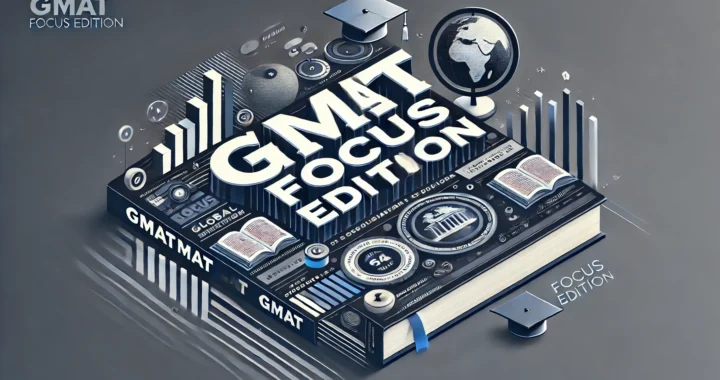If you’re planning to take the SAT exam in 2024, it’s crucial to understand its syllabus to strategize your preparation effectively. The SAT covers three primary sections: Reading, Writing and Language, and Math, with each focusing on different skills. In 2024, the Reading section will consist of 52 questions, testing your ability to analyze and interpret texts. The Writing and Language section contains 44 questions, assessing grammar, punctuation, and sentence structure. The Math section is divided into two parts: one that allows the use of a calculator (38 questions) and one that doesn’t (20 questions). To give you a more comprehensive picture, this guide dives into each section’s specifics, helping you tailor your study plan for success.
SAT Exam Syllabus and Format
The SAT exam syllabus is structured into three main sections, with an optional essay component. Here’s a detailed breakdown of the SAT exam pattern:

| Section | Time Allotted | Number of Questions | Score Range |
|---|---|---|---|
| Evidence-Based Reading and Writing | 65 minutes (Reading) + 35 minutes (Writing and Language) | 52 (Reading) + 44 (Writing and Language) | 200-800 |
| Math | 80 minutes | 58 | 200-800 |
| Essay (Optional) | 50 minutes | 1 prompt | Reported separately |
The total testing time for the SAT exam syllabus without the essay is 3 hours, and with the essay, it’s 3 hours and 50 minutes. The SAT exam syllabus is scored on a scale of 400-1600, with each main section scored 200-800.
Understanding the SAT exam syllabus structure is crucial for effective preparation. The Evidence-Based Reading and Writing section combines scores from the Reading Test and the Writing and Language Test. The Math section includes both calculator and no-calculator portions. The optional Essay is scored separately and doesn’t affect your overall SAT score.
It’s important to note that there’s no penalty for wrong answers on the SAT exam syllabus. This means you should always make an educated guess if you’re unsure of an answer, as it can only improve your chances of scoring higher.
Evidence-Based Reading and Writing

The Evidence-Based Reading and Writing section of the SAT exam syllabus consists of two tests: Reading and Writing and Language.
Reading Test:
- 65 minutes
- 52 questions
- 5 passages (1 Literature, 2 Social Science, 2 Science)
The Reading Test in the SAT exam syllabus assesses your ability to read and interpret passages from various disciplines. You’ll encounter passages from U.S. and World Literature, History/Social Studies, and Science. Some passages may include informational graphics, such as tables or charts, which you’ll need to interpret alongside the text.
Writing and Language Test:
- 35 minutes
- 44 questions
- 4 passages
The Writing and Language Test focuses on editing and improving passages. You’ll be asked to correct errors in grammar, punctuation, and usage, as well as improve the overall effectiveness and clarity of the writing.
| Skill Tested | Description | Percentage of Questions |
|---|---|---|
| Command of Evidence | Interpreting and using evidence from texts | 25-30% |
| Words in Context | Understanding vocabulary and how word choice shapes meaning | 15-20% |
| Analysis in History/Social Studies and Science | Analyzing information presented in graphs, tables, and passages | 25-30% |
| Expression of Ideas | Improving the effectiveness of written text | 25-30% |
| Standard English Conventions | Demonstrating command of standard English grammar, usage, and punctuation | 20-25% |
To excel in this section of the SAT exam syllabus, focus on improving your reading comprehension skills, expanding your vocabulary, and practicing identifying and correcting common grammatical errors. Regular reading of diverse materials, such as scientific journals, historical texts, and literature, can significantly enhance your performance in this section.
SAT Math Section Overview

The Math section of the SAT exam syllabus tests your problem-solving and analytical skills. It’s divided into two parts:
- No-calculator portion (25 minutes, 20 questions)
- Calculator-allowed portion (55 minutes, 38 questions)
| Math Topic | Percentage of Questions | Key Concepts |
|---|---|---|
| Heart of Algebra | 33% | Linear equations and inequalities, systems of linear equations, linear functions |
| Problem Solving and Data Analysis | 28% | Ratios, proportions, percentages, data interpretation, statistics, probability |
| Passport to Advanced Math | 29% | Quadratic equations, exponential functions, polynomial operations, complex numbers |
| Additional Topics in Math | 10% | Geometry, trigonometry, radians, complex numbers in the complex plane |
Key concepts covered in the SAT exam syllabus for math include:
- Linear equations and systems
- Problem-solving using ratios, percentages, and proportional reasoning
- Analyzing and interpreting data
- Quadratic and nonlinear equations
- Geometry and trigonometry
The Math section of the SAT exam syllabus emphasizes real-world problem-solving and data analysis. You’ll encounter questions that require you to interpret graphs, charts, and data sets. It’s crucial to have a strong foundation in algebra and to be comfortable working with various mathematical representations.
To prepare effectively for this section, focus on understanding the underlying concepts rather than memorizing formulas. Practice applying your math skills to real-world scenarios and work on improving your mental math abilities for the no-calculator portion.
Overview of the SAT Essay

The SAT essay, while optional, is an important component of the SAT exam syllabus for students applying to universities that require it. In this 50-minute section, you’ll be asked to read a passage and write an essay analyzing how the author builds an argument to persuade their audience.
The essay is scored on three dimensions:
- Reading: How well you understood the passage
- Analysis: How well you analyzed the author’s argument
- Writing: The quality of your written response
Each dimension is scored on a scale of 2-8, resulting in three separate scores for your essay.
When preparing for the SAT essay, focus on:
- Developing a clear thesis statement
- Identifying and analyzing rhetorical devices used by the author
- Providing specific examples from the text to support your analysis
- Organizing your essay logically and coherently
- Using varied sentence structures and sophisticated vocabulary
- Practicing time management to complete your essay within the allotted time
Remember, while the essay is optional, some universities may require it as part of their admissions process. Check the requirements of the schools you’re interested in before deciding whether to take the essay portion of the SAT exam syllabus.
Overview of SAT Subject Tests
While SAT Subject Tests were discontinued in 2021, it’s important to understand their historical context as part of the SAT exam syllabus. These tests were hour-long, content-based assessments that allowed students to showcase their knowledge in specific subject areas.
| Previously Offered SAT Subject Tests |
|---|
| Literature |
| U.S. History |
| World History |
| Math Level 1 |
| Math Level 2 |
| Biology E/M |
| Chemistry |
| Physics |
| Various Languages |
Although these tests are no longer offered, many universities have adapted their admissions processes to focus more on AP exams, IB courses, or other subject-specific assessments. Some key points to consider:
- AP and IB exams: Many colleges now place greater emphasis on Advanced Placement (AP) or International Baccalaureate (IB) exam scores as indicators of subject-specific knowledge.
- Course rigor: Universities are likely to pay more attention to the difficulty of courses you’ve taken in high school.
- Extracurricular activities: Involvement in subject-related clubs, competitions, or projects can demonstrate your passion and expertise in specific areas.
- School-specific tests: Some universities may introduce their own subject-specific tests or assessments as part of their application process.
While the SAT Subject Tests are no longer part of the SAT exam syllabus, it’s crucial to showcase your subject-specific strengths through other means in your college applications.
Study Strategies for the SAT

To excel in the SAT exam syllabus, consider the following preparation strategies:
- Create a study schedule: Allocate specific time slots for each section of the SAT exam syllabus. Aim for consistent, regular study sessions rather than cramming.
- Use official SAT practice materials: The College Board offers free, high-quality practice tests and resources. These materials are the most accurate representation of the actual SAT exam syllabus.
- Focus on your weaknesses: Identify areas where you struggle and dedicate extra time to improving those skills. Use diagnostic tests to pinpoint your weak areas.
- Practice time management: Learn to pace yourself during each section of the test. Use a watch or timer during practice sessions to get comfortable with the time constraints.
- Take full-length practice tests: Simulate test conditions to build stamina and familiarity with the SAT exam syllabus. Aim to take at least 3-4 full-length practice tests before your actual SAT.
- Review and learn from your mistakes: Analyze incorrect answers to understand why you made errors and how to avoid them in the future. Keep a log of your mistakes and review it regularly.
- Read extensively: Improve your reading comprehension and vocabulary by reading a variety of texts. Focus on challenging materials like scientific journals, classic literature, and opinion pieces.
- Master fundamental math concepts: Ensure you have a solid grasp of algebra, geometry, and data analysis. Practice applying these concepts to real-world problems.
- Develop essay writing skills: Practice analyzing arguments and structuring your responses effectively. Work on improving your writing speed without sacrificing quality.
- Stay healthy and well-rested: Maintain a balanced lifestyle to perform your best on test day. Get enough sleep, eat well, and exercise regularly.
Additional tips:
- Join a study group or find a study buddy to stay motivated and share resources.
- Use online resources like Khan Academy, which partners with the College Board to provide free SAT prep materials.
- Consider taking a preparatory course or working with a tutor if you need additional support.
- Familiarize yourself with the test-day procedures and requirements to reduce anxiety on the actual test day.
Conclusion
Understanding the SAT exam syllabus is the first step towards achieving your desired score. By familiarizing yourself with the test format, content areas, and question types, you can develop a targeted study plan that addresses your specific needs. Remember that success on the SAT requires consistent effort and practice. By preparing thoroughly, you’re not just working towards a good SAT score, but also building a strong foundation for your future academic endeavors. Utilize the resources available to you, stay motivated, and approach your preparation with a positive mindset. With dedication, smart study strategies, and the right mindset, you can master the SAT exam syllabus and open doors to exciting educational opportunities abroad.




